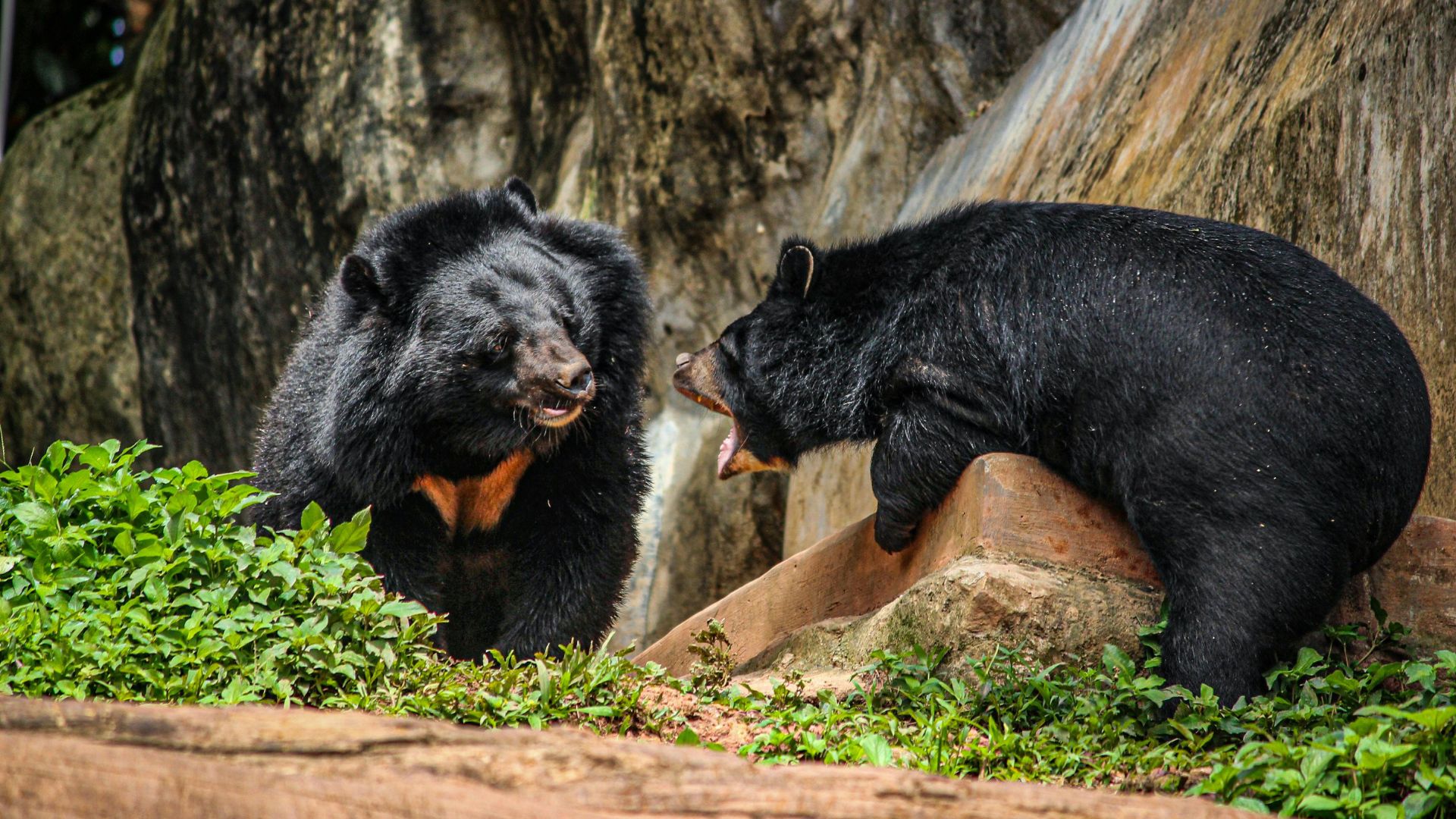The topic of “The Oldest Animals You Won’t Believe Exist!” takes us on a captivating journey into the world of the most ancient creatures that have defied the test of time. In this fascinating exploration, we delve into the extraordinary longevity and resilience displayed by a diverse array of animals, each with its unique story to tell. These remarkable beings challenge our preconceived notions about aging, offering a glimpse into the mysteries of life itself.
From the Methuselah, a bristlecone pine tree that has thrived for over 4,800 years in the harsh California mountains, to the immortal jellyfish, Turritopsis dohrnii, which can reverse aging, and the microscopic water bears, or tardigrades, capable of surviving the harshest conditions, the world of these ancient animals is nothing short of awe-inspiring.
Whether it’s the horseshoe crab with its 450-million-year existence, the ocean quahog clam revealing insights into our planet’s history, lobsters that seemingly defy aging, the ageless Hydra, or bowhead whales that have mastered longevity, these creatures provide profound insights into the wonders of biology and the secrets of time itself. Their stories not only evoke wonder but also encourage us to ponder the possibilities of extending our own lifespans and the preservation of these incredible species.
Discovering the oldest animals on Earth
Discovering the oldest animals on Earth is a journey into the fascinating world of ancient creatures that have defied the test of time. These remarkable beings challenge our understanding of longevity and provide profound insights into the science of aging. From Methuselah, the ancient bristlecone pine, with its astounding age and the stories hidden in its rings, to the immortal jellyfish, Turritopsis dohrnii, which can reverse aging, and the enigmatic tardigrades,
Earth’s ultimate survivors, capable of enduring extreme conditions and even outer space, the world of the oldest animals is a tapestry of wonder and resilience. Horseshoe crabs, with their 450 million-year history, and their vital contribution to medical research through their remarkable blue blood, add another layer of complexity to this narrative. Ocean quahogs, the longest-lived animals, offer insights into our planet’s history through the study of their growth rings. Lobsters, often considered seafood delicacies, turn out to be potential centenarians, while Hydra, with its constant cell renewal, holds promise for regenerative medicine.
Bowhead whales, masters of longevity in the mammal world, adapt to frigid waters and intrigue scientists with their anti-aging genes. In conclusion, exploring the oldest animals on Earth not only reveals the wonders of the natural world but also underscores the mysteries they unlock and the lessons they offer about resilience and adaptation.
Oldest Animals
The world of Earth’s oldest animals is a testament to the incredible resilience and adaptability of life on our planet. These ancient creatures have defied the passage of time, challenging our understanding of longevity and offering profound insights into the science of aging. From Methuselah, the ancient bristlecone pine, standing tall in the harsh California mountains for over 4,800 years, to the immortal jellyfish, Turritopsis dohrnii, which reverses aging and defies death in the depths of the ocean, these animals are a window into the mysteries of biology.
Tardigrades, the microscopic water bears, exhibit astonishing resilience, surviving extreme conditions from radiation to the vacuum of space. Horseshoe crabs, considered living fossils, have thrived for over 450 million years and even play a crucial role in modern medicine. Ocean quahogs reveal our planet’s history through their long lives, while lobsters, often seen on dinner plates, have the potential to live for centuries. Hydra, a small aquatic organism, continuously renews its cells, holding the promise of regenerative medicine.
Bowhead whales, with lifespans exceeding two centuries, thrive in the icy Arctic waters, offering insights into longevity. The oldest animals on Earth are a testament to the remarkable world of biology, challenging our perception of time and aging.
Animals defying time: A closer look
In the realm of the natural world, there exist a select group of creatures that seem to defy the relentless march of time. These remarkable beings, which have earned their place in the annals of biology, challenge our preconceived notions about aging and longevity. As we delve deeper into their fascinating stories, we are presented with a unique opportunity to peer into the past and glimpse the future of life on our planet.
From the ancient Methuselah, a bristlecone pine that has endured for thousands of years in the harshest of environments, to the Turritopsis dohrnii, the immortal jellyfish that can revert to its youthful form, these animals captivate us with their extraordinary abilities. Tardigrades, tiny yet tough, have braved extreme conditions on Earth and even in the vacuum of space, while horseshoe crabs, living fossils that have been around for millions of years, offer invaluable contributions to the field of medicine.
Ocean quahogs reveal the secrets of our planet’s history in their enduring shells, lobsters showcase indefinite growth and molting, and Hydra’s constant cell renewal defies aging. Bowhead whales, the masters of longevity in the mammal kingdom, provide insight into how cold waters and genetic adaptations contribute to their incredible lifespan. In exploring these creatures, we gain a deeper understanding of the intricate mechanisms that allow them to stand the test of time, and perhaps, uncover the keys to unlocking the mysteries of longevity in the human world.
Table of Contents
Methuselah, the ancient bristlecone pine
- Methuselah’s astounding age
- Surviving the harshest conditions
- The secrets in its rings
Methuselah’s astounding age
One of the most ancient living beings on our planet is Methuselah, a bristlecone pine tree found in the White Mountains of California. Estimated to be over 4,800 years old, Methuselah’s enduring presence serves as a living testament to resilience and adaptation.
Surviving the harshest conditions
Methuselah has not only survived for millennia but has also thrived in the harshest of environments. The extreme cold, arid conditions, and poor soil have been no match for this hardy tree.
The secrets in its rings
Methuselah’s rings tell a story of climate, struggle, and adaptation. Each ring holds clues to the environmental challenges it has faced throughout its extensive lifetime.
A glimpse into oceanic immortality
- The immortal jellyfish, Turritopsis dohrnii
- How does it reverse aging?
- Its extraordinary life cycle
The immortal jellyfish, Turritopsis dohrnii
The Turritopsis dohrnii, often referred to as the “immortal jellyfish,” is a remarkable creature capable of reverting to its juvenile form after reaching maturity, effectively defying aging.
How does it reverse aging?
Scientists are still unraveling the molecular mysteries behind this rejuvenation process, which could hold significant implications for human longevity.
Its extraordinary life cycle
The Turritopsis dohrnii’s life cycle is nothing short of extraordinary. It’s a creature that seems to have found the fountain of youth in the depths of the ocean.
Tardigrades – Earth’s ultimate survivors
- Tiny yet tough – the enigma of tardigrades
- Cryptobiosis and their resilience
- Tardigrades in outer space
Tiny yet tough – the enigma of tardigrades
Tardigrades, often known as water bears, are microscopic creatures with astonishing resilience. They can endure extreme temperatures, radiation, and even the vacuum of space.
Cryptobiosis and their resilience
Their ability to enter a state called cryptobiosis allows them to survive in the harshest conditions by almost completely drying out.
Tardigrades in outer space
Tardigrades have even survived the harsh environment of outer space, further highlighting their incredible adaptability.
The timeless horseshoe crab
- An ancient ocean dweller
- Their remarkable blood and its medical applications
- Conservation efforts
An ancient ocean dweller
Horseshoe crabs, often considered living fossils, have been around for over 450 million years. Their unique anatomy and behavior make them a true marvel of nature.
Their remarkable blood and its medical applications
The blue blood of horseshoe crabs contains a substance called Limulus amebocyte lysate (LAL), which is crucial for testing medical equipment for bacterial contamination.
Conservation efforts
Due to their vital role in medical research, there are concerted efforts to protect and conserve these ancient creatures.
The eternal ocean quahog
- The oldest living creature on Earth
- What do these clams reveal about our planet’s history?
- The importance of ocean quahog research
The oldest living creature on Earth
Ocean quahogs, a type of clam, hold the record for the longest-lived animal, with some individuals surpassing 500 years of age.
What do these clams reveal about our planet’s history?
By studying the growth rings in their shells, scientists gain valuable insights into environmental conditions and historical climate change.
The importance of ocean quahog research
Understanding the ocean quahog’s longevity may provide valuable data for climate change research and the preservation of marine ecosystems.
Lobsters defy aging
- Lobsters – more than just seafood
- Indefinite growth and molting
- The mystery of the 140-year-old lobster
Lobsters – more than just seafood
Lobsters have long been considered a culinary delicacy, but they are also creatures of remarkable longevity, potentially living for centuries.
Indefinite growth and molting
Unlike many animals, lobsters do not exhibit signs of aging as they grow, continually molting and renewing their exoskeletons.
The mystery of the 140-year-old lobster
Recent discoveries of exceptionally old lobsters have left scientists fascinated by their potential for long, healthy lives.
The ageless Hydra
- Unveiling the secrets of Hydra’s immortality
- Constant cell renewal
- Implications for regenerative medicine
Unveiling the secrets of Hydra’s immortality
Hydra, a small aquatic organism, possesses the remarkable ability to regenerate its cells continually.
Constant cell renewal
The key to Hydra’s immortality lies in its cells, which do not seem to age, offering profound insights into regenerative medicine.
Implications for regenerative medicine
Hydra’s unique biological features have ignited interest in exploring its potential applications for human health, particularly in regenerating damaged tissues and organs.
Bowhead whales – masters of longevity
- Bowhead whales’ incredible lifespan
- The adaptation to cold waters
Bowhead whales’ incredible lifespan
Bowhead whales are some of the longest-lived mammals on Earth, with individuals known to live for over two centuries.
The adaptation to cold waters
Their ability to thrive in frigid Arctic waters has captivated researchers studying their genes for potential anti-aging insights.
Thank you, if you liked this information of mine then do give feedback. Your feedback will motivate me further so that I can give you more information.




